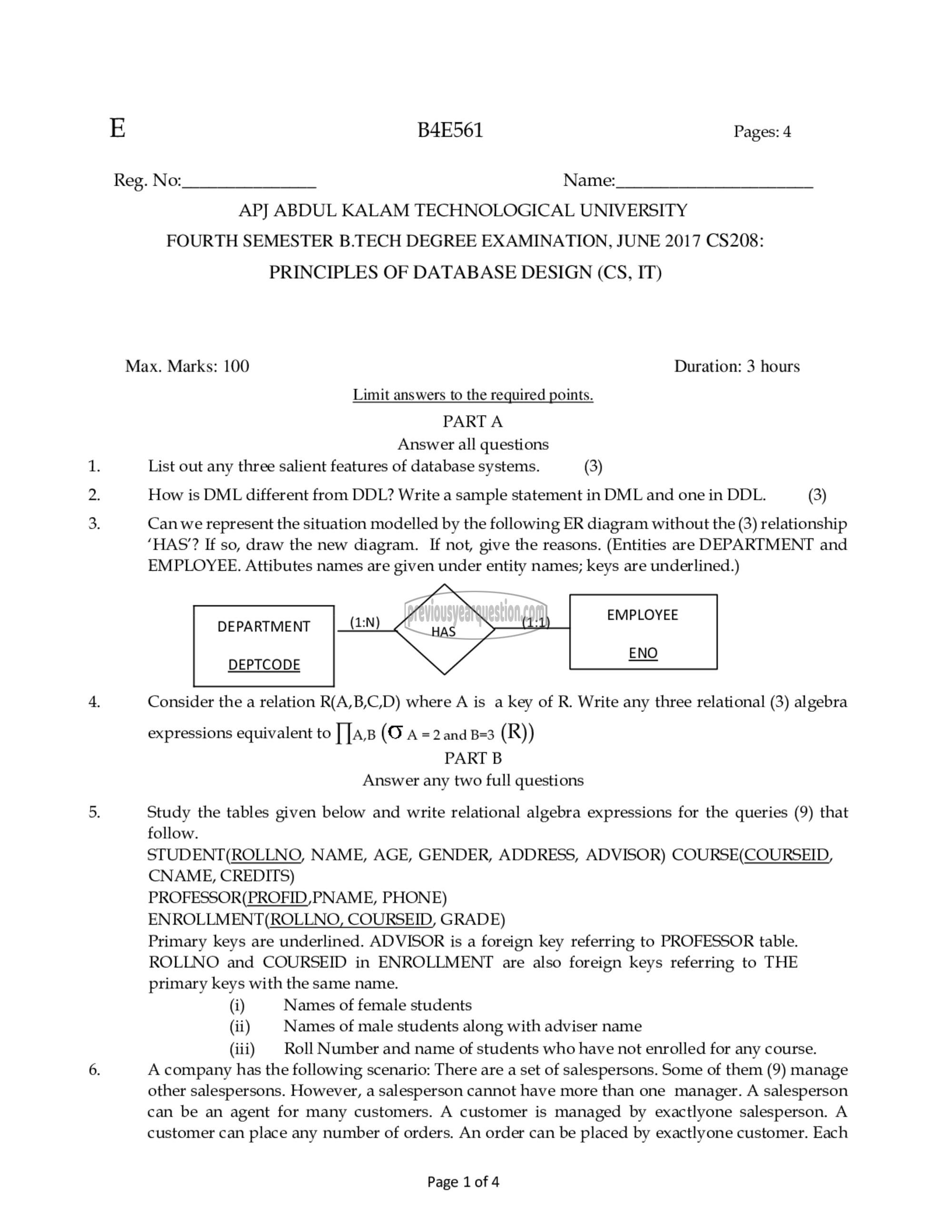APJ ABDUL KALAM TECHNOLOGICAL UNIVERSITY Previous Years Question Paper & Answer
Semester : SEMESTER 4
Subject : Principles of Database Design
Year : 2017
Term : JUNE
Branch : COMPUTER SCIENCE AND ENGINEERING
Scheme : 2015 Full Time
Course Code : CS 208
Page:1
E B4E561 Pages: 4
Reg. No: Name:
APJ ABDUL KALAM TECHNOLOGICAL UNIVERSITY
FOURTH SEMESTER B.TECH DEGREE EXAMINATION, JUNE 2017 CS208:
PRINCIPLES OF DATABASE DESIGN (CS, IT)
Max. Marks: 100 Duration: 3 hours
Limit answers to the required points.
PART A
Answer all questions
List out any three salient features of database systems. (3)
How is DML different from DDL? Write a sample statement in DML and one in DDL. (3)
Can we represent the situation modelled by the following ER diagram without the (3) relationship
‘HAS’? If so, draw the new diagram. If not, give the reasons. (Entities are DEPARTMENT and
EMPLOYEE. Attibutes names are given under entity names; keys are underlined.)
~>
EMPLOYEE
DEPARTMENT
EN
DEPTCODE ಹಾಸನ
Consider the a relation R(A,B,C,D) where A is a key of R. Write any three relational (3) algebra
expressions equivalent to [ [५.8 (೮ A =2and 8-3 (R))
PART B
Answer any two full questions
Study the tables given below and write relational algebra expressions for the queries (9) that
follow.
STUDENT(ROLLNO, NAME, AGE, GENDER, ADDRESS, ADVISOR) COURSE(COURSEID,
CNAME, CREDITS)
PROFESSOR(PROFID,PNAME, PHONE)
ENROLLMENT(ROLLNO, COURSEID, GRADE)
Primary keys are underlined. ADVISOR is a foreign key referring to PROFESSOR table.
ROLLNO and COURSEID in ENROLLMENT are also foreign keys referring to THE
primary keys with the same name.
(i) Names of female students
(ii) Names of male students along with adviser name
(iii) | Roll Number and name of students who have not enrolled for any course.
A company has the following scenario: There are a set of salespersons. Some of them (9) manage
other salespersons. However, a salesperson cannot have more than one manager. A salesperson
can be an agent for many customers. A customer is managed by exactlyone salesperson. A
customer can place any number of orders. An order can be placed by exactlyone customer. Each
Page 1 of 4
